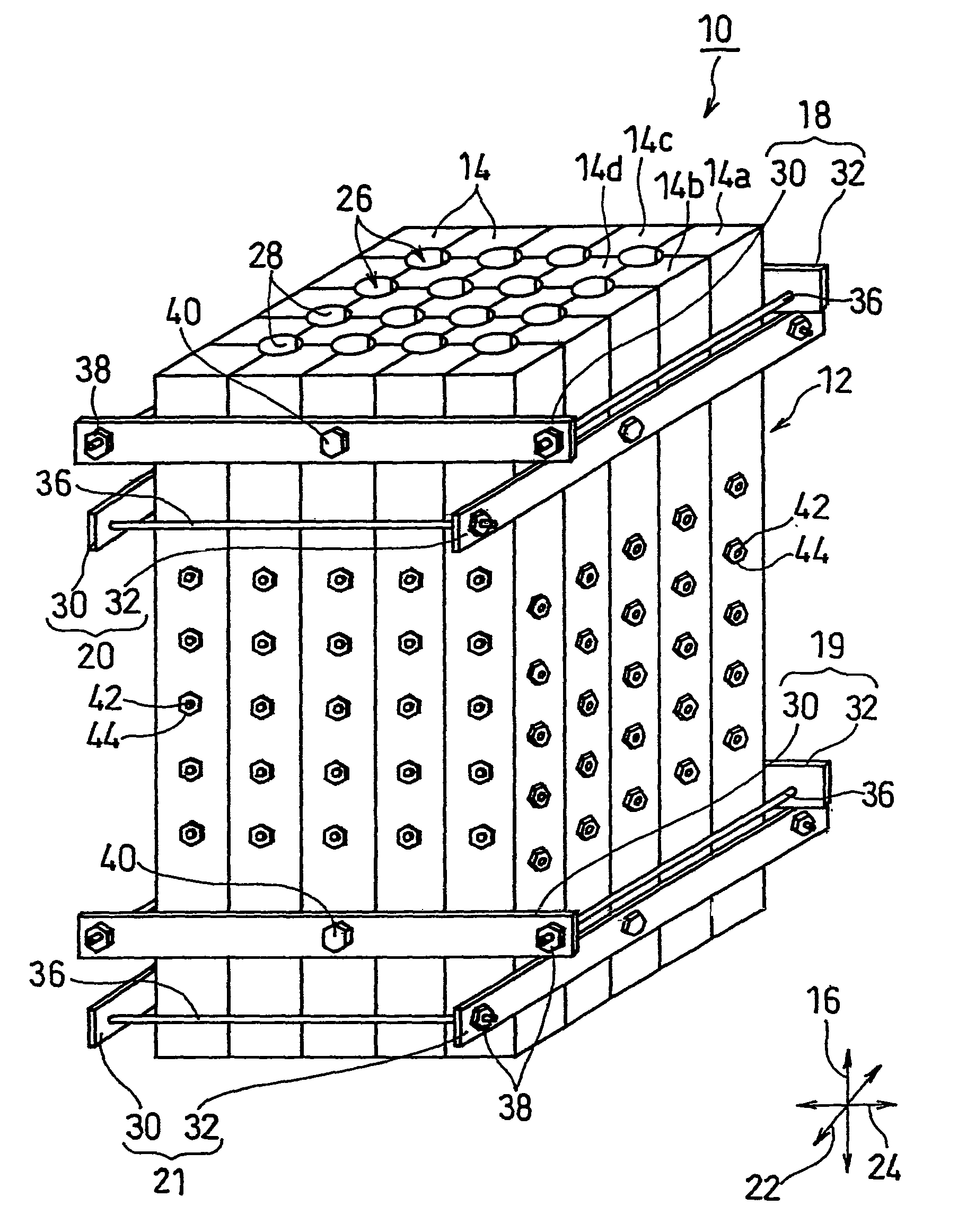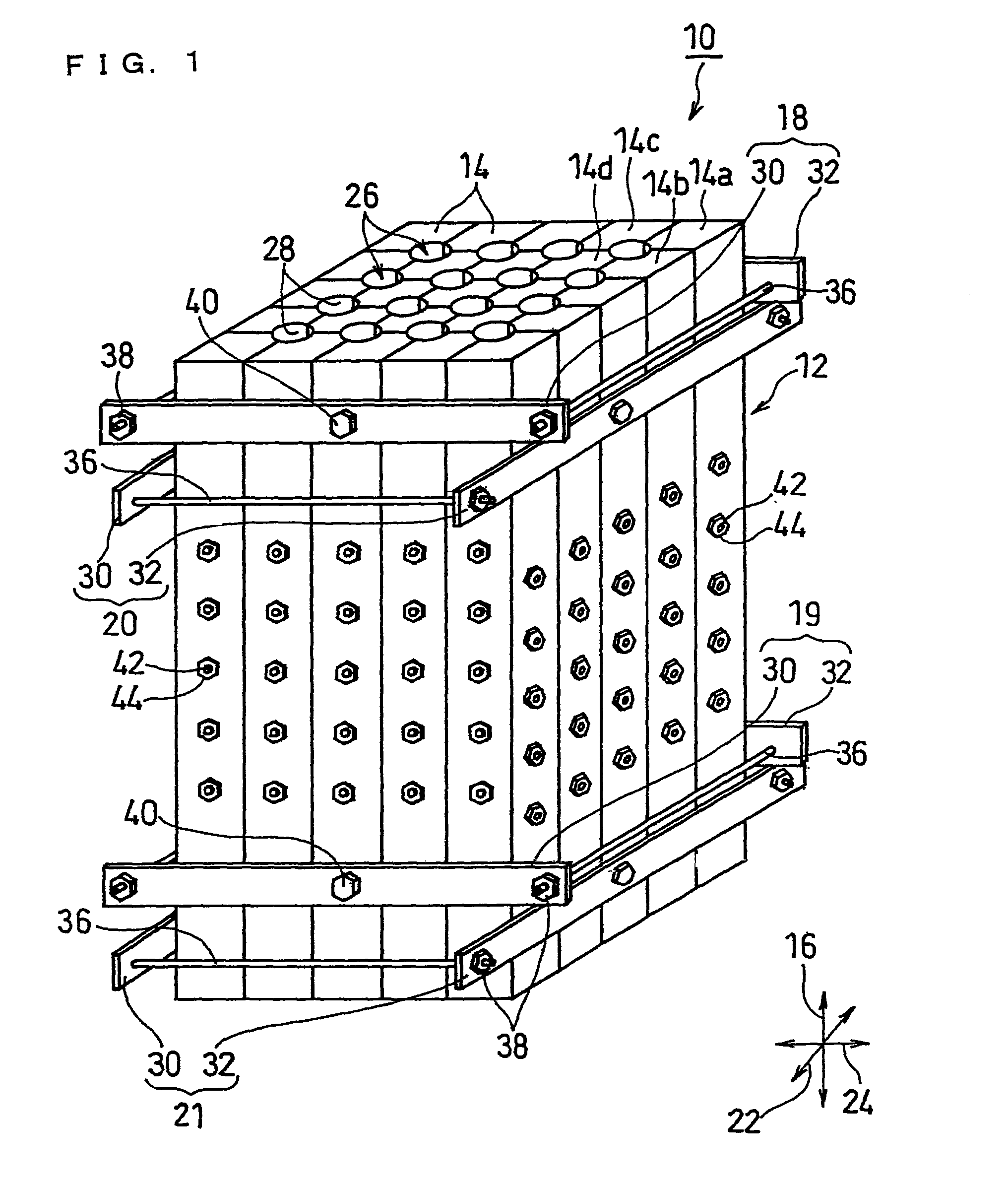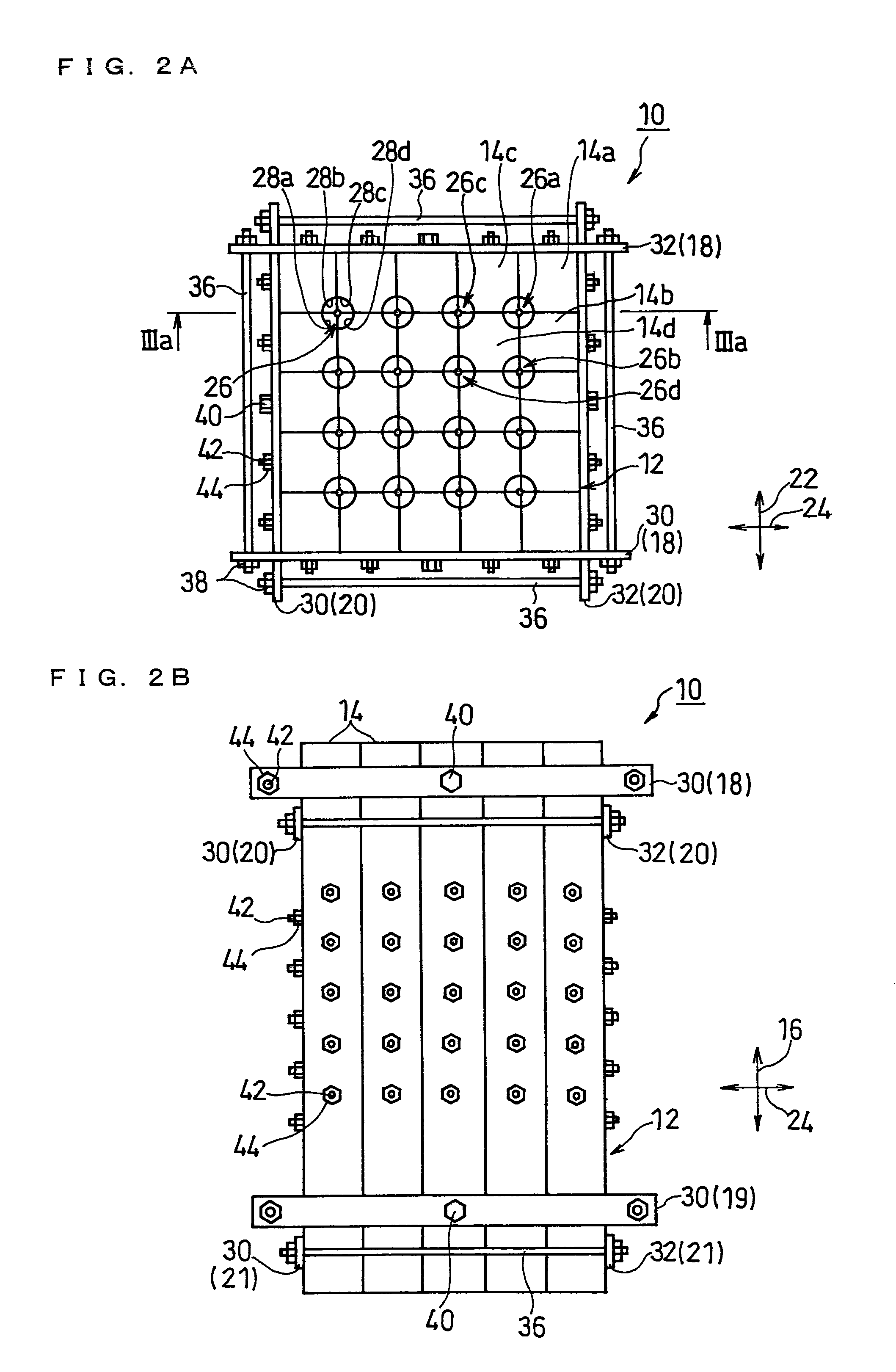Mold for forming cast rods, casting apparatus, and production method of cast rods
a casting apparatus and casting technology, applied in the direction of manufacturing tools, moulding apparatus, foundry patterns, etc., can solve the problems of mold breakage, adversely affecting the stability of film formation, and the inability to remove cast silicon from the mold, so as to improve the efficiency and yield of casting rod production.
- Summary
- Abstract
- Description
- Claims
- Application Information
AI Technical Summary
Benefits of technology
Problems solved by technology
Method used
Image
Examples
Embodiment Construction
[0050]FIG. 1 is a perspective view illustrating an embodiment of the mold for forming cast rods of the present invention. FIG. 2A is a plan view of FIG. 1; FIG. 2B is a front view of FIG. 1; FIG. 2C is a right-side view of FIG. 1; and FIG. 2D is a bottom view of FIG. 1. FIG. 3A is a IIIa-IIIa sectional view of FIG. 2A and FIG. 2C, and FIG. 3B is a partially enlarged view of FIG. 3A. FIG. 4 is a plan view illustrating the state in which the segments constituting a segment assembly illustrated in FIG. 1 are spaced apart from each other in directions orthogonal to the longitudinal direction of each segment.
[0051]It should be noted that in the following description regarding the mold for forming cast rods and the casting apparatus, the description referring to the direction is based on the direction when the mold or the casting apparatus is placed horizontally, and specifically, based on the directional arrow shown in each figure.
[0052]With reference to FIG. 1 and FIGS. 2A to 2D, a mold...
PUM
| Property | Measurement | Unit |
|---|---|---|
| decomposition point | aaaaa | aaaaa |
| thickness | aaaaa | aaaaa |
| length | aaaaa | aaaaa |
Abstract
Description
Claims
Application Information
 Login to View More
Login to View More - R&D
- Intellectual Property
- Life Sciences
- Materials
- Tech Scout
- Unparalleled Data Quality
- Higher Quality Content
- 60% Fewer Hallucinations
Browse by: Latest US Patents, China's latest patents, Technical Efficacy Thesaurus, Application Domain, Technology Topic, Popular Technical Reports.
© 2025 PatSnap. All rights reserved.Legal|Privacy policy|Modern Slavery Act Transparency Statement|Sitemap|About US| Contact US: help@patsnap.com



